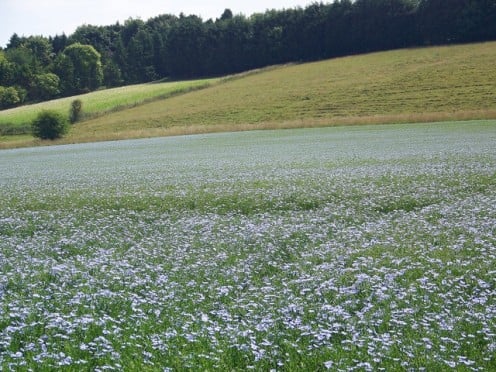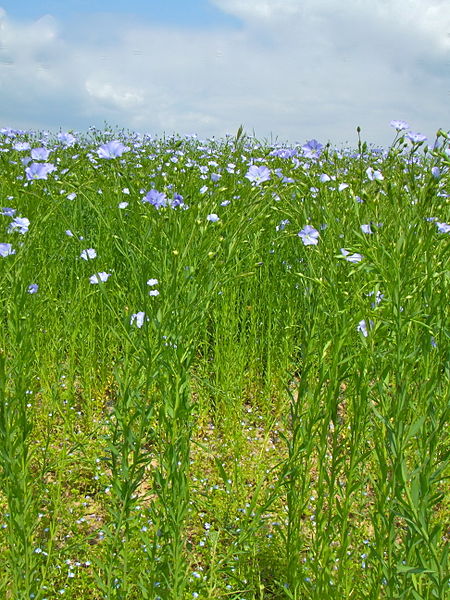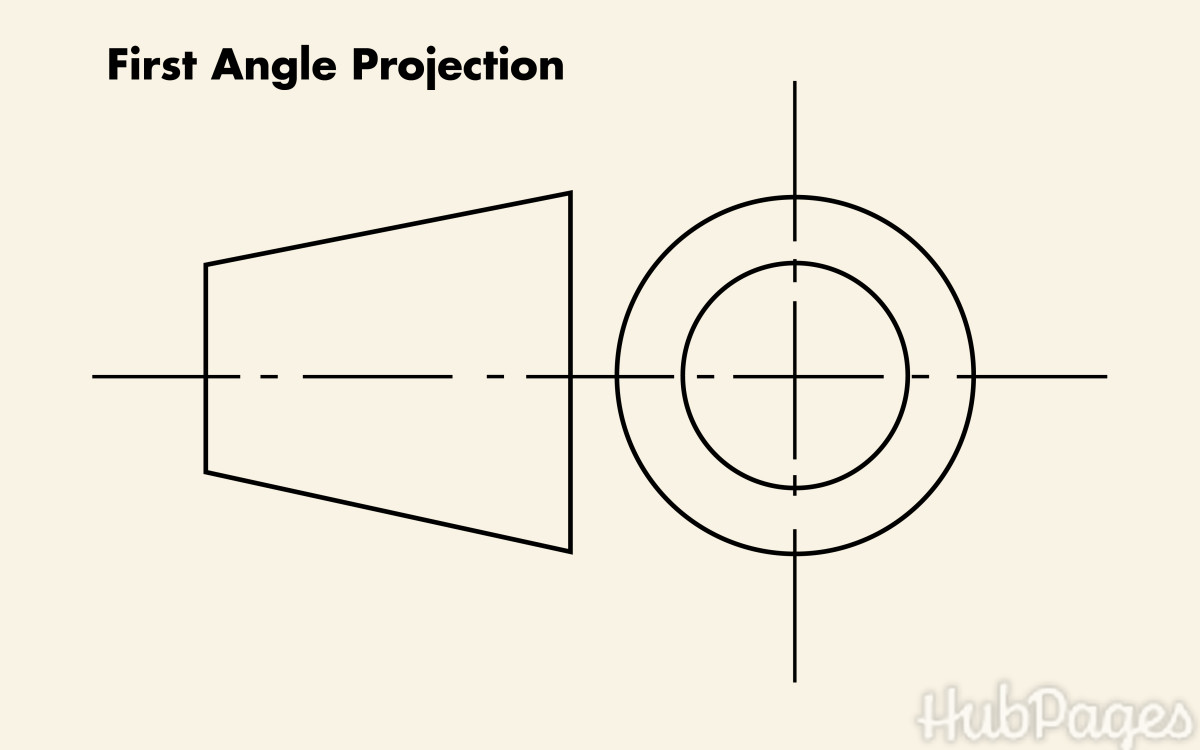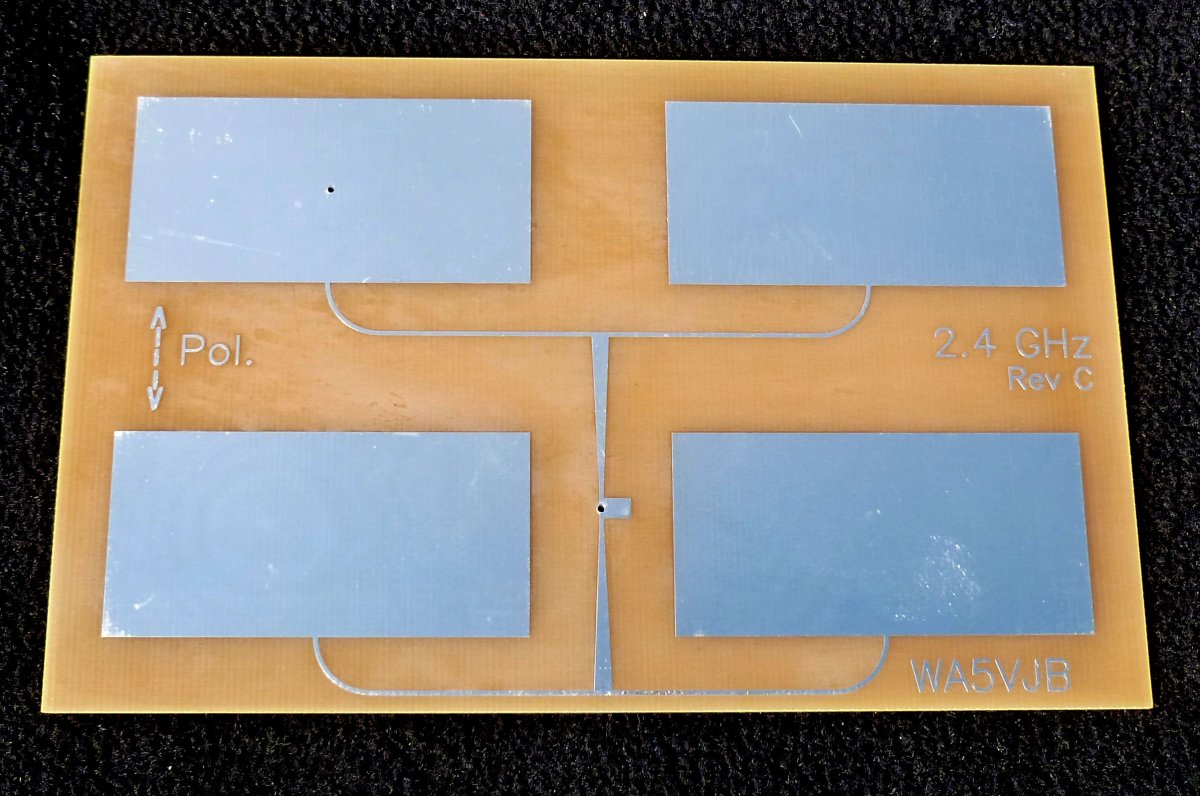How We Make Linen - Part II - Flax
Grown for both it's seed and it's fiber, the flax plant has many uses both in the past and today, that often most of us don't think about. In fact, chances are that you hopefully have a little flax in your pocket, because the linen fabric that our paper currency is made from, comes directly from the flax plant. Here are a few of the other uses for this plant:
- Linen
- Dye
- Fishing nets
- Hair gels and tonics
- Soap
- Lowering cholesterol
- Treating breast and prostate cancer
- Laxative (if not taken in excess)
- Lace
- Sheeting
- Twine
- Rope
- Linseed Oil
- Rolling paper for cigarettes and cigars
- Animal and poultry feed
- Artist's canvas (in Europe, Americans art canvas is usually cotton)
The flax plant is as ancient as plants come. It was widely known and grown first in ancient Ethiopia, India, and Egypt. One example is that it is known to have been used for cloth for more than 30,000 years by mankind.
This annual plant is most times seen with the prettiest of blue flowers, but fields of bright red flax flowers are also still flax. The fruit contains the apple shaped seeds that we all know today as flax seeds.

How Flax Yarn Is Woven Into Cloth
The final operation is weaving, and the first step in this, is the rolling of the skeins onto spools and thence onto the warpers' beam of the weaving loom. In weaving, the threads which run up and down the loom represent the "warp," while the cross threads are called the "weft" or "filling."
As the yarns run on to the weavers' beam they pass through a starch bath called "dressing." This smooths any loose ends and gives strength during the weaving process. Weaving is done by the shuttle which carries the weft passing under and over the warp threads.
By changing the number of threads passed over or under the shuttle, different kinds of linen are produced, such as plain linen cloth, twilled linen cloth, or linen drill, and huckabacks.
Most of the table linen used is damask, and it has a woven ornamental design and contrasting weaves.

A Pot of Cloth
When the woven fabric is taken from the loom it is run through the cropping machine, which cuts knots and loose threads from the surface of the cloth. The end is now in sight, for the linen fabric is ready for bleaching or whitening.
Pieces of linen are stitched together, end to end in one piece many thousands of yards in length. This is called "a pot of cloth."
It is put through several washers and boilings with chemicals, and is then spread on the grass for some days. This performance is repeated until a correct stage of whiteness is reached.
The web of the cloth is then put through a water mangle and a tank of starched dressing before it is passed over heated rollers, or "calendars," to dry it.
The glossy finish is given by a stamping process called "beetling," in which wooden rails rise and fall upon the linen for a period of from thirty to sixty hours. After beetling, the fabric is passed over warm calendars which give it its final touch. It is ready then to be wrapped and sent into the world to carry on the work it is fitted for.
Flax Processing
You Probably Don't Know!
That to produce a linen tablecloth with a design is a long process. The design has to be sketch on ordinary paper, then it must be transferred to paper divided into squares. The final step transfers the design to cardboard strips punched so that the threads can be led along the pattern holes. While machines do that today, in the past, this was all done by hand.
Bet You Didn't Know!
Flax fiber, after retting is a medium brown in color, and the woven fabric is therefore the same color. It has to be bleached.
In the old days this process consisted of boiling the pieces of linen in a chemical solution, washing them and spreading them out on grass fields. This process was repeated until the cloth had a dazzling whiteness.
If You'd Like To Know More!
- AB - Flax weaving and tutoring
- Ancient Herbs, Modern Uses: Flax
Ancient Egyptian murals and papyri depict the growth of flax, the spinning of flax thread, and the weaving of that thread into linen. Medicinally, the seeds were prescribed as a demulcent, emollient and laxative, flaxseed also was used as a remedy fo - Flax and Linen
Flax is also known as linen. The flax plant yields the fibres for linen cloth; the short fibres not needed for cloth production can be used to make paper. Linen has been used for thousands of years. The earliest traces of its use have been dated as f - Flax Weaving Pioneering on the home front
- Uses of Flax



